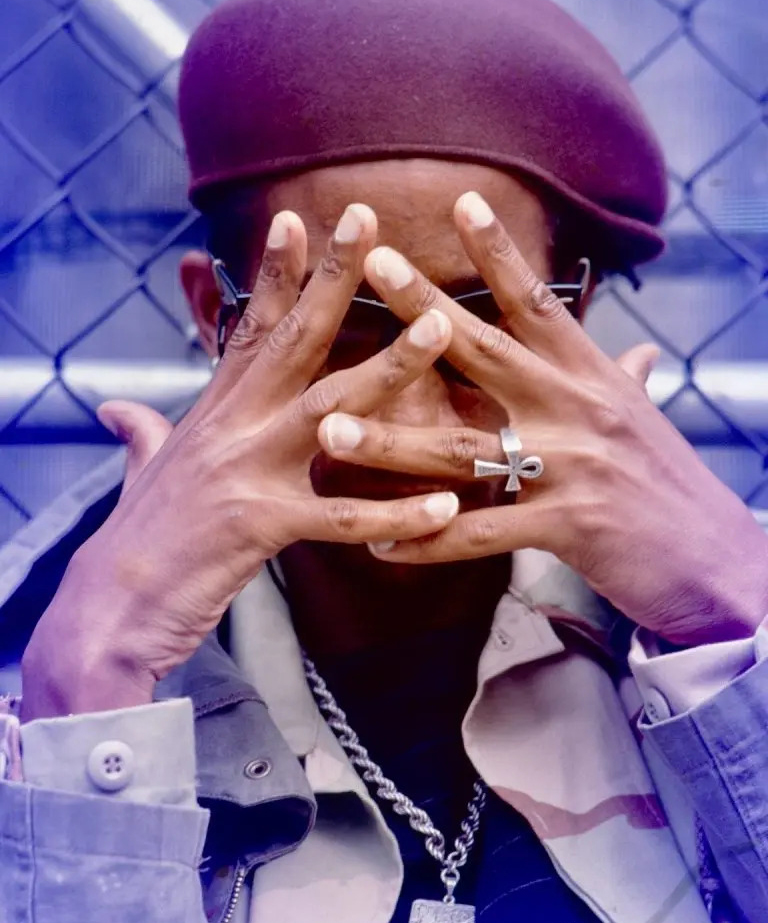Phase 2, who in the early 1970s was one of the most prolific, inventive and emulated New York graffiti writers, and who later produced early hip-hop’s most innovative fliers, died on Dec. 12 (2019) at a nursing and rehabilitation center in the Bronx. He was 64. The cause was amyotrophic lateral sclerosis, also known as Lou Gehrig’s disease, his longtime friend David Schmidlapp said. In the South Bronx at the dawn of the 1970s, all the creative components that would coalesce into what became widely known as hip-hop were beginning to take shape. At the center of them all was Phase 2, an intuitive, disruptive talent who first made his mark as a writer of graffiti — although he hated the term... Phase 2 was born Michael Lawrence Marrow on Aug. 2, 1955, in Manhattan. He was raised primarily in the Bronx, in the Forest Houses projects, and attended DeWitt Clinton High School, which in the early 1970s was rapidly becoming a graffiti hotbed. Conveniently, it was across the street from a Transit Authority storage yard; subway cars were the preferred canvas of the day. He began writing graffiti in October 1971, inspired by a cousin, who went by the name Lee 163d. The form was evolving rapidly, with each day delivering a fresh set of artworks on train lines across the city. Phase 2 was best known as the pioneer of softies — bubble-style letters that helped usher graffiti away from simple tags and toward full-fledged artworks. He painted a variety of substyles of these letters, with a name for each: “squish luscious,” “phasemagorical phantastic” and so on. Many innovations that became commonplace, like loops and arrows, are credited to Phase 2.
“His lettering constantly changed; you never saw his tag repeat itself. He was constantly trying to destroy himself, destroying his previous style,” said Hugo Martinez, who formed the United Graffiti Artists collective, of which Phase 2 was a member, in 1972... Phase 2 enjoyed the thrill of writing on subway cars; “impact expressionism,” he called it. In an interview with Wax Poetics magazine, he recalled writing a poem to a police officer on the vandal squad who had just missed arresting him: “If you only knew/the real Phase 2/the super sleuth/who’s still on the loose.” By the beginning of 1975, he had largely given up subway graffiti, moving his work onto paper and canvas or into sculpture. And he continued to develop new styles, sometimes passing them off to his fellow writers. Crucially, he rejected the word graffiti — “the G-word,” he called it. He found it denigrating and preferred terms like style writing. “It’s like calling a meteor a pebble,” he told Raw Vision magazine in 1997. “I’m absorbing and devouring language in its coexisting state and creating something else with it.” He was also a sometime D.J., as well as a dancer and a founder of the New York City Breakers crew. And he rapped: In the late 1970s, Phase 2 was a member of a crew called the Wizards, and in 1982 he released a pair of singles, “The Roxy” and “Beach Boy.” Charlie Ahearn, the director of the 1983 film “Wild Style,” has said that Phase 2 was the basis for the film’s main character, Phade (played by Fab 5 Freddy). Phase 2 wasn’t formally involved with the film, but he was also a consultant on the 1984 hip-hop movie “Beat Street.” Con't below... + some early flyers...
In the late 1970s, Phase 2 began applying his artistic gifts to a different medium: party fliers. His designs, laid out by hand, were modern, orderly and dense; he called the style “funky nous deco.” ... He designed hundreds of them — for Grandmaster Flash’s early D.J. gigs, for a variety of uptown events and, later, for the Friday night parties at the Roxy, where uptown and downtown were commingling, and where he would also do live painting.... He designed the first logo for the Tuff City record label and the fliers for the New York City Rap Tour, which in 1982 took a cadre of rappers, dancers and artists across the Atlantic to England and France, the first real exporting of New York hip-hop culture.... And while Phase 2 prized his anonymity — he rarely posed for photos, and for decades he publicly used an alias, Lonny Wood, rather than his birth name — he was an inveterate letter writer, replying to correspondence from young graffiti artists. His survivors include his mother, a sister, five children and seven grandchildren. From the 1990s forward, Phase 2 brought his collage artwork to collaborations with the skate brand Supreme and designed album covers for the Rawkus and Definitive Jux labels. He continued to make art, selling privately and occasionally in galleries, including works on paper and robot-style sculptures influenced by his love of Japanese animation. At his death he had been in the early stages of a documentary project with Mr. Grey and a book about his fliers with the hip-hop historian Pete Nice. But he was primarily concerned with preserving what he deemed to be the correct and proper history of aerosol art... - NYT (12/20/19).




